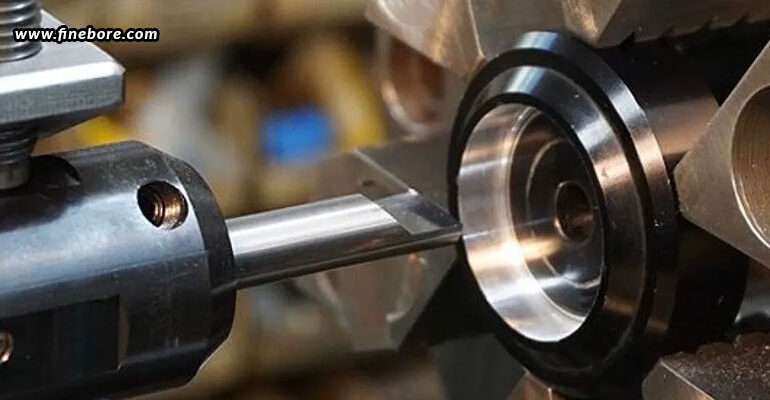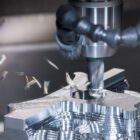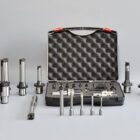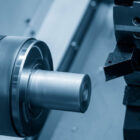Precision boring tools are pivotal in machining, requiring meticulous attention to detail. Any mistakes or errors can affect results in a variety of ways, which is why it is important for machinists to avoid such mistakes in order to maintain the integrity of precise operations and guarantee peak performance. Manufacturers may protect themselves from expensive errors by being aware of frequent risks, following best practices, and valuing ongoing learning. It is essential to choose tools carefully, set up machines correctly, and follow prescribed procedures. Error prevention is crucial for preserving the efficacy and efficiency of the machining process, which in turn helps produce high-quality components in the field of precision machining, where accuracy is critical. This post describes the typical mistakes that machinists might make, and also provides helpful advice on how to prevent them.
Ignoring proper tool selection
Mistake – Making the wrong tool selection for the task in hand
Making the wrong tool selection for precision boring, which is frequently driven by availability or familiarity, is one of the major mistakes. This error may result in worse machining results, more wear, and process inefficiencies all around.
Solution – Adhering to the material specifications, tolerances, and particular requirements when selecting a precise boring tool
Before choosing a tool, machinists must give careful consideration to the material qualities, necessary tolerances, and particular project requirements in order to prevent this mistake. Machinists can increase the probability of obtaining the best outcomes by selecting precision boring equipment that take these factors into account. Making well-informed judgements based on a deep comprehension of the work helps ensure accurate, successful, and efficient machining, while reducing the possibility of errors.
Neglecting tool inspection
Mistake – Using tools without conducting a complete inspection
Using tools without properly inspecting them is a key mistake in precision boring that can result in reduced machining quality and more downtime. By utilizing old, damaged, or faulty tools, machinists run the danger of reducing machining productivity and quality when they neglect to perform routine tool inspections.
Solution – Checking the tools regularly for wear, damage, or flaws
Machinists need to give routine inspections of precision boring tools top priority in order to fix the error. Frequent inspections for wear, damage, or faults allow for the early identification of such problems, allowing for timely replacements and guaranteeing that the tools being used are in best possible condition. This proactive strategy minimizes disturbances, prolongs tool life, and improves the overall efficiency of the precision boring process, in addition to maintaining machining precision.
Inappropriate machine setup
Mistake – Inappropriate tool setup or poor machine alignment
The neglect of tool setup and machine alignment is a major trap in precision boring that frequently leads to reduced accuracy and subpar machining performance. Inaccurate setup or alignment can shorten tool life, increase tool wear, and affect the dimensional accuracy of machined components.
Solution – Carefully aligning the machine, calibrating the tools, and adhering to the manufacturer’s instructions
Machinists must place a high priority on exact tool calibration, strict machine alignment, and setup compliance with manufacturer instructions in order to minimize the error. Thorough alignment guarantees precise movement of the tool, mitigating the likelihood of mistakes, whilst appropriate calibration prolongs tool lifespan and upholds machining precision. By following the manufacturer’s instructions, the chances of misalignments and setup problems can be minimized, ensuring that the machine runs as efficiently as possible. Machinists may improve their overall precision and guarantee precise and efficient precision boring procedures by using these guidelines.
Disregarding material considerations
Mistake – Ignoring the need for material-specific tooling
Neglecting the importance of material-specific tooling is a frequent mistake in precision boring that can result in less-than-ideal outcomes. Ignoring the hardness, abrasiveness, and other properties of the material can lead to early tool wear, decreased machining efficiency, and harmed accuracy.
Solution – Choosing tools based on the hardness, abrasiveness, and other characteristics of the material to be machined
Machinists should place high priority on choosing tools that are specific to the material qualities in order to correct this error. The chosen tools should be capable of resisting the demands of the material, and this is possible if consideration is given to aspects like hardness, abrasiveness, and thermal conductivity. Machinists may maximize machining precision, extend tool life, and improve tool performance by selecting the right tools. By taking a proactive stance, the precision boring process becomes more effective and efficient, producing high-quality outcomes across a range of materials.
Improper feeds and speeds
Mistake – Improper feeds and speeds resulting in surface finish imperfections or tool wear
Misuse of feeds and speeds is a common problem in precision boring that frequently leads to increased tool wear and degraded surface finishes. Erroneous configurations may result in ineffective cutting, excessive heat generation, and reduced tool longevity, which can adversely affect the machining procedure as a whole.
Solution – Adhering to manufacturer guidelines and modifying feeds and speeds in accordance with tool and material requirements
Machinists should follow the manufacturer’s recommendations for feeds and speeds in order to avoid making this error. It’s also essential to comprehend the tool’s parameters and the material being machined. Based on these factors, adjustments are made to improve surface finish quality, minimize tool wear, and maximize cutting performance. Machinists may secure the manufacture of components with higher surface finishes, preserve tool life, and achieve precision in boring operations by carefully adhering to these suggestions.
Inadequate coolant usage
Mistake – Neglecting proper coolant application
In precision boring, it is typical to overlook the significance of coolant, which can result in overheating, increased tool wear, and impaired chip evacuation. The performance of the tool and the general quality of machined components can be severely impacted by improper coolant application.
Solution – Ensuring a consistent and adequate coolant flow in order to avoid overheating, damage to tools, and enhance chip evacuation
During precision boring operations, machinists must prioritize maintaining a steady and sufficient coolant flow in order to avoid making this error. Proper coolant application helps to disperse heat, lubricate the cutting tool, and promote effective chip evacuation. Sustaining proper coolant levels prolongs the life of tools, lowers friction, and improves machining efficiency overall. Through appropriate coolant application, machinists can reduce the possibility of errors, optimizing tool performance, and producing high-quality, precisely machined components.
Overlooking tool lubrication
Mistake – Ignoring the need for lubrication
In precision boring, it is typical to overlook the crucial importance of lubrication, which can result in increased friction, faster wear, and decreased tool life. The machining process’s overall efficacy and efficiency are compromised when lubrication is neglected.
Solution – Applying proper lubricants to minimize wear, cut down on friction, and extend tool life
Machinists should prioritize using the right lubricants while performing precision boring operations in order to correct this error. By acting as a barrier of defence, lubrication lowers friction between the tool and the workpiece. This prolongs the cutting tool’s life and reduces wear and tear. Using the proper lubricants also helps to enhance chip evacuation, which makes machining run more smoothly. Machinists can significantly improve the accuracy and productivity of their work by following this advice.
Ignoring tool path optimization
Mistake – Not optimizing tool paths
Ignoring toolpath optimization is a common mistake in precision boring that results in longer idle times and worse overall machining efficiency. Ineffective tool paths can lead to extraneous motions, longer cycle times, and a decline in the accuracy and caliber of components that are machined.
Solution – Using cutting-edge technologies to optimize the toolpath, cutting down on idle periods and increasing productivity
Machinists should use advanced software for toolpath optimization to avoid making this error. By reducing idle periods and optimizing cutting patterns, these tools help to expedite the machining process. Machinists may greatly increase productivity, lower production costs, and improve the overall precision of precision boring operations by adopting technology that enables tool path optimization. This finally leads to obtaining high-quality machined components.
Tool overhang issues
Mistake – Excessive tool overhang leading to vibration and poor accuracy
Excessive tool overhang is a problem that is frequently ignored in precision boring and can lead to vibration and decreased accuracy. Tool lengths that are excessively long may undermine stability and lower the overall accuracy and quality of the machining process.
Solution – Minimizing tool overhang by selecting the right tool lengths
Machinists should give careful consideration to minimizing tool overhang and choosing suitable tool lengths in order to correct this error. Maintaining tool lengths within advised ranges improves stability during machining and lowers the possibility of vibrations compromising precision. Selecting the appropriate tool length for the job guarantees peak efficiency, extended tool life, and enhanced precision all around. Machinists can reduce the dangers related to excessive tool overhang by following this advice; thus achieving superior machining outcomes.
Inadequate chip control
Mistake – Ineffective chip evacuation, leading to surface irregularities and tool damage
In precision boring, it is typical to overlook the significance of good chip evacuation, which can result in surface defects and tool damage. Reduced machining quality, higher cutting pressures, and chip recutting can all be consequences of inadequate chip removal.
Solution – Optimizing the geometry, speeds, and feeds of the tools
Machinists should give priority to optimizing tool geometry, feed rates, and cutting speeds in order to ensure effective chip evacuation. To minimize the danger of tool damage and surface flaws, proper tool design should be combined with the use of optimum speeds and feeds to minimize chip formation. Machinists contribute to increased tool life, better surface finish, and overall precision by making sure that the chip evacuation procedure is efficient. This proactive strategy reduces interruptions, boosts machining effectiveness, and produces high-quality components.
Ignoring in-process monitoring
Mistake – Ignoring to monitor in real-time when machining
One of the worst mistakes in precision boring is to neglect real-time monitoring, which can lead to lost chances for prompt problem identification and resolution. Neglecting to keep an eye on important factors when machining can result in errors, tool wear, and lower-quality finished products.
Solution – Using in-process monitoring tools to get real-time input so that changes may be made on time
Precision boring operations should be performed by machinists with in-process monitoring devices to reduce the likelihood of this error. These devices offer up-to-date information on factors including surface finish, cutting forces, and tool wear. Machinists may make rapid modifications as a result, thanks to immediate feedback, which guarantees that the machining process stays within predetermined tolerances. The use of such monitoring systems not only improves accuracy but also efficiency, while also lowering scrap rates, and improving overall machining performance.
In conclusion, avoiding typical blunders with precision boring tools is critical to getting the best results possible throughout the machining process. For increased productivity and accuracy, diligence in areas like tool selection, machine setup, and inspection procedures is essential. The given advice provides machinists with a road map for navigating the intricacies of precision boring, guaranteeing dependable and regular outcomes while prolonging the life of tools. Notably, FineTech Toolings stands out as a dependable supplier of the finest precision boring tools in Bangalore, providing state-of-the-art solutions to precisely match the needs of contemporary machining.






